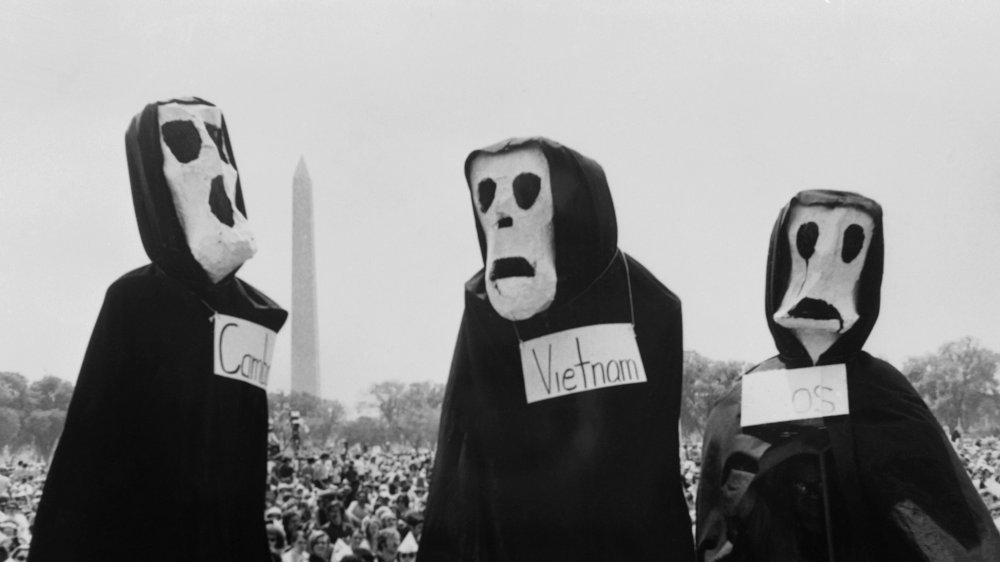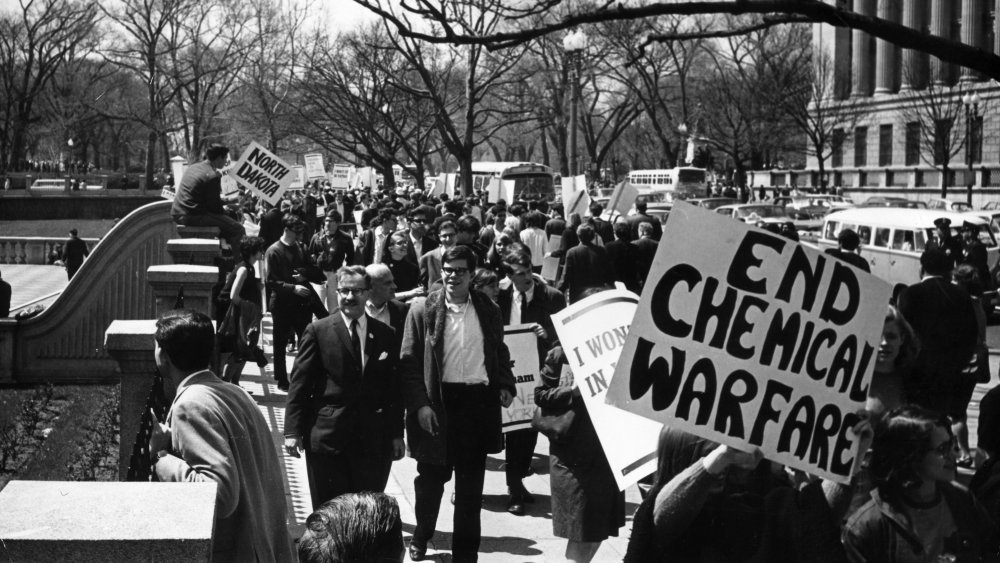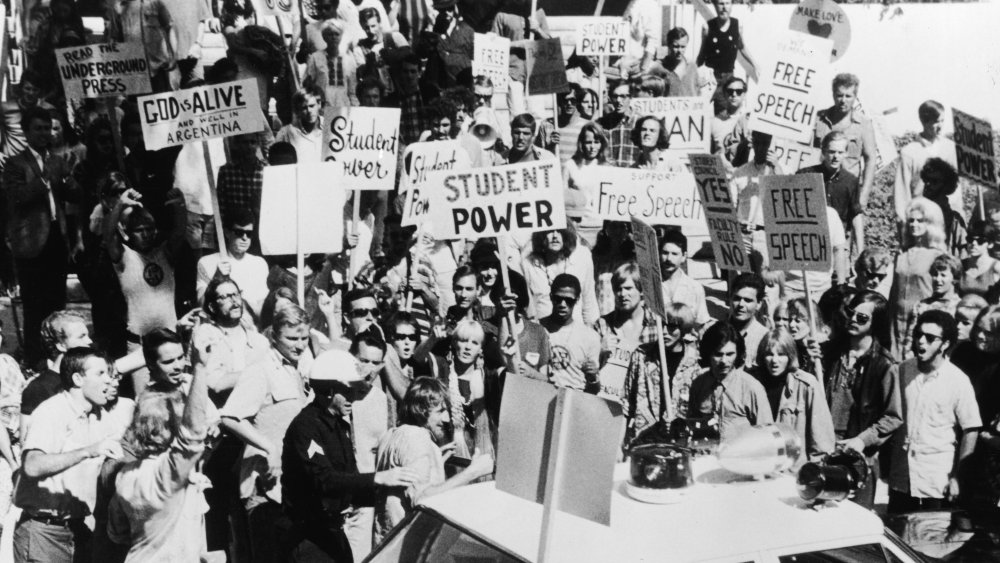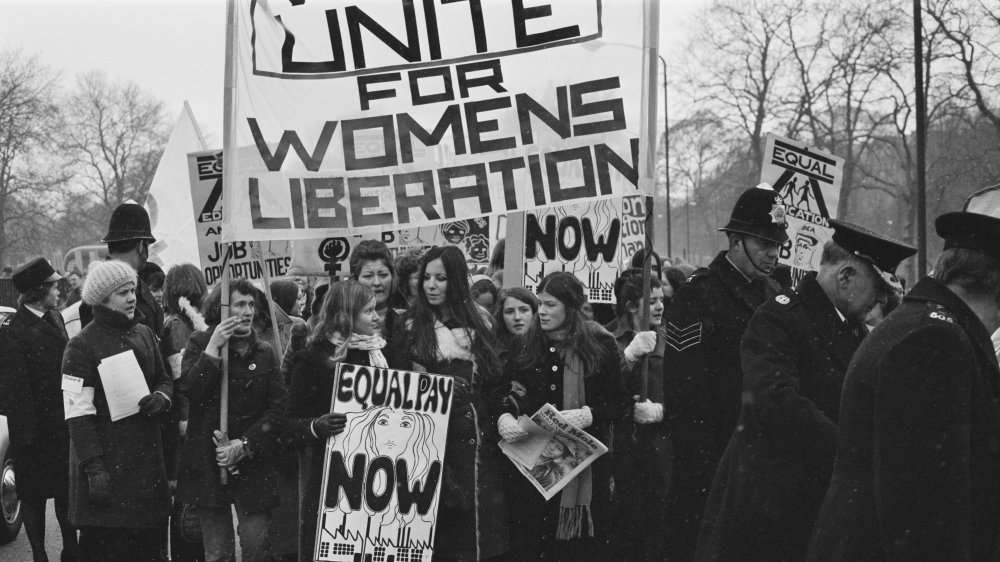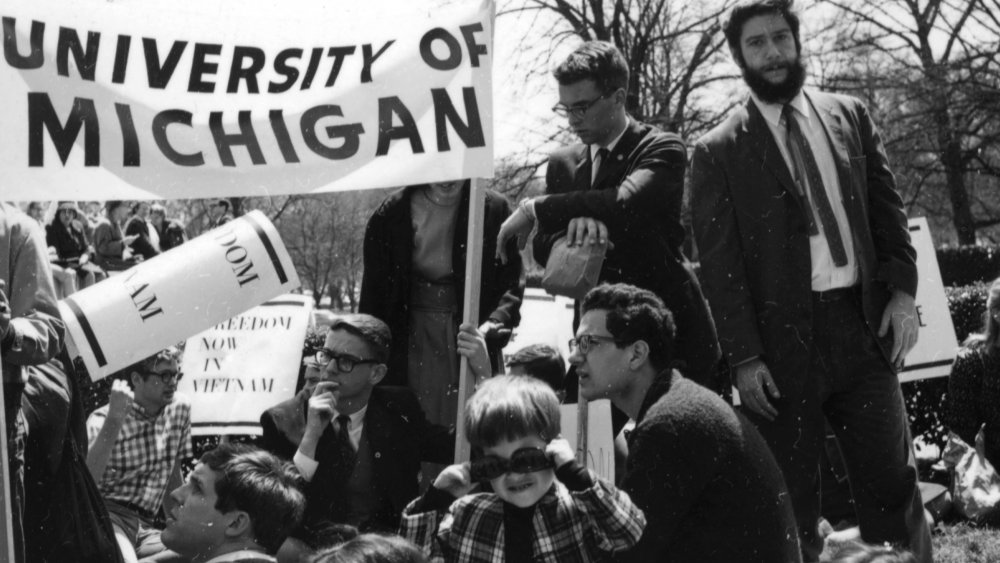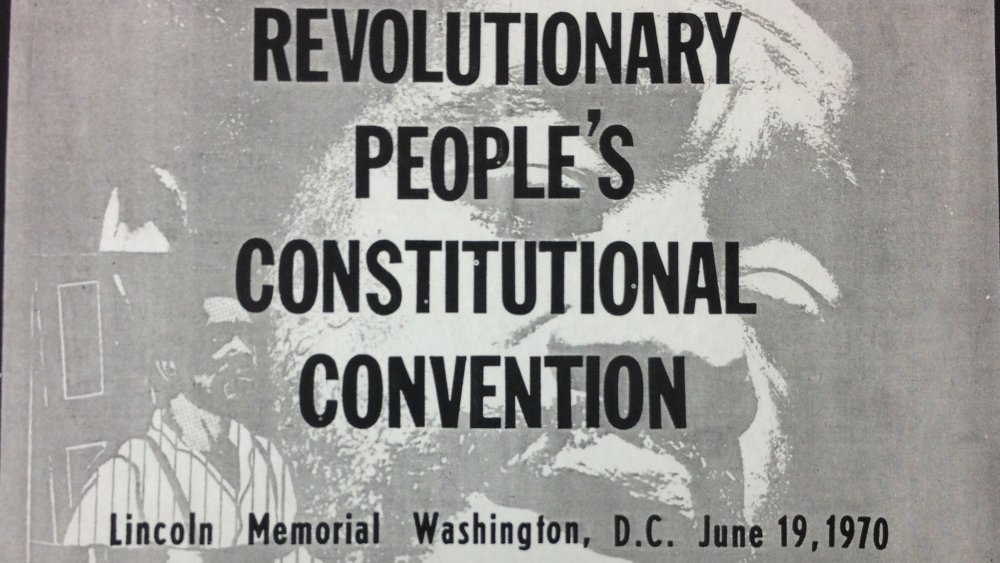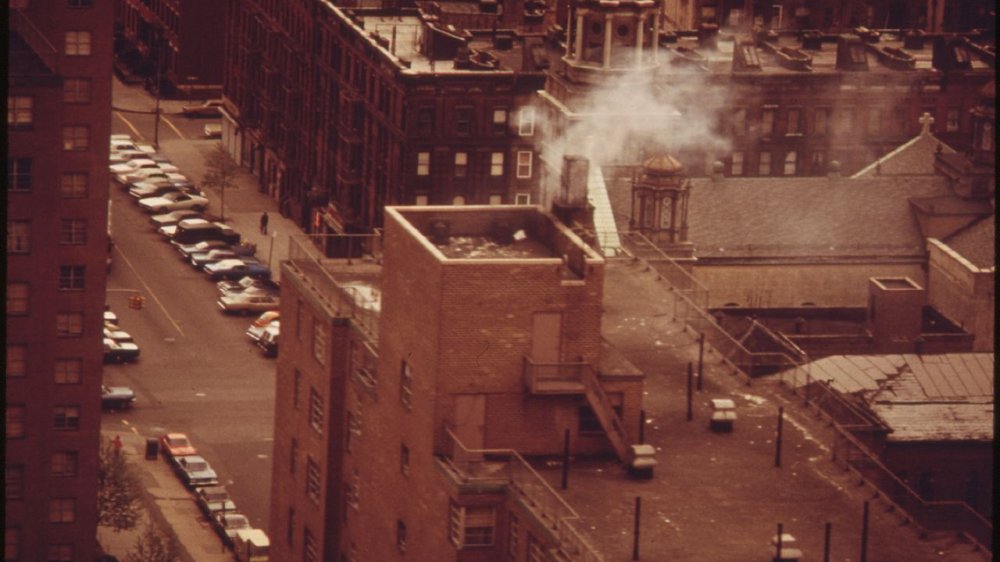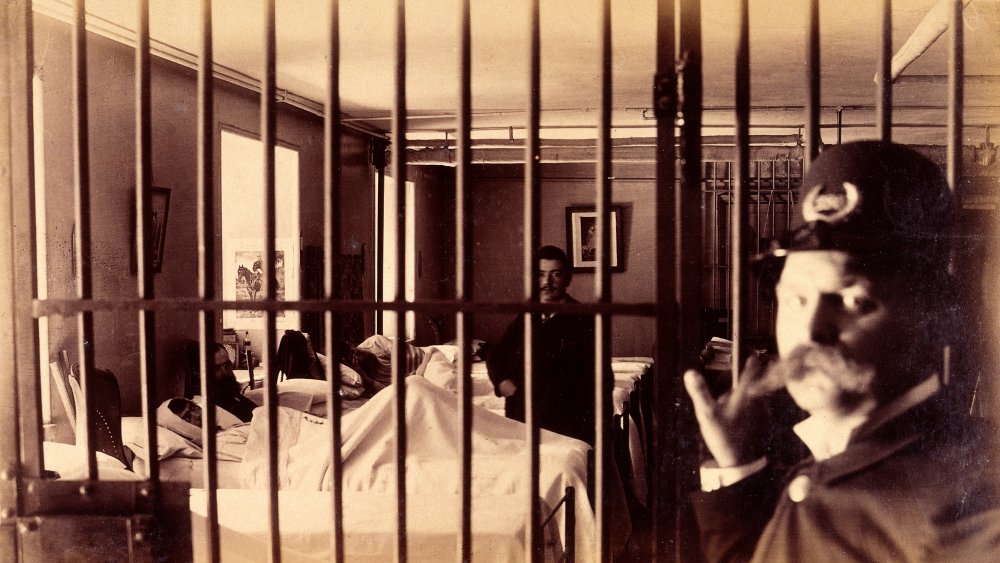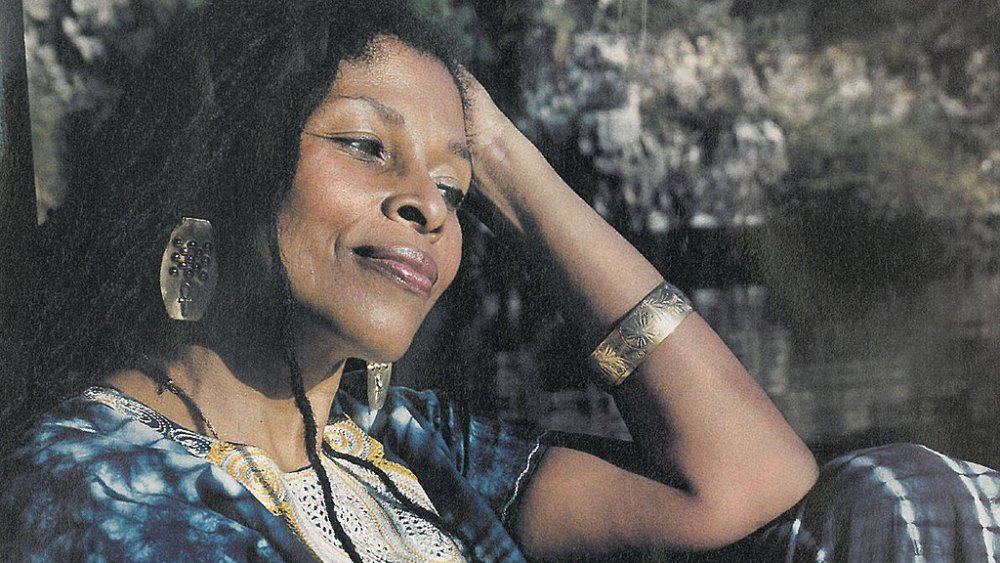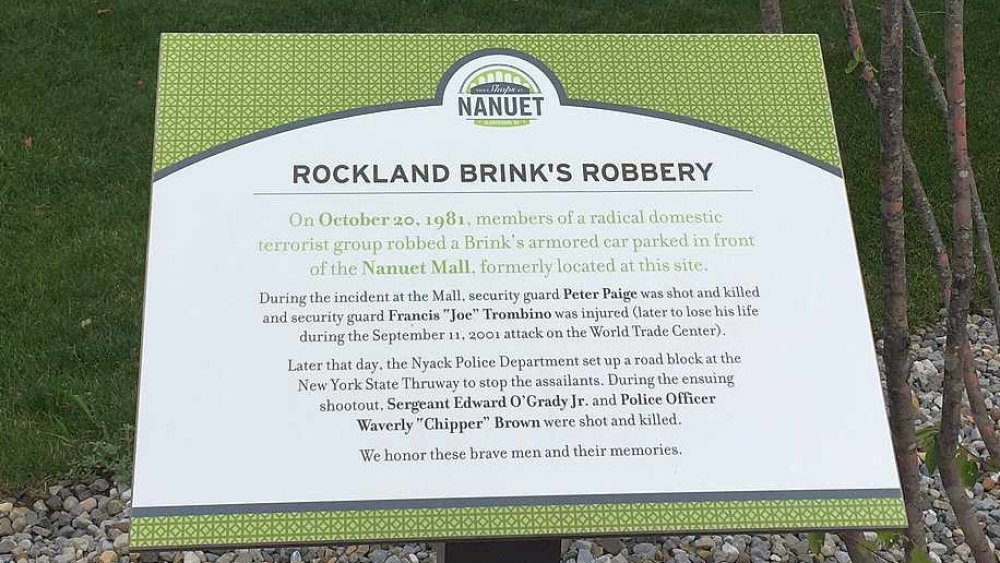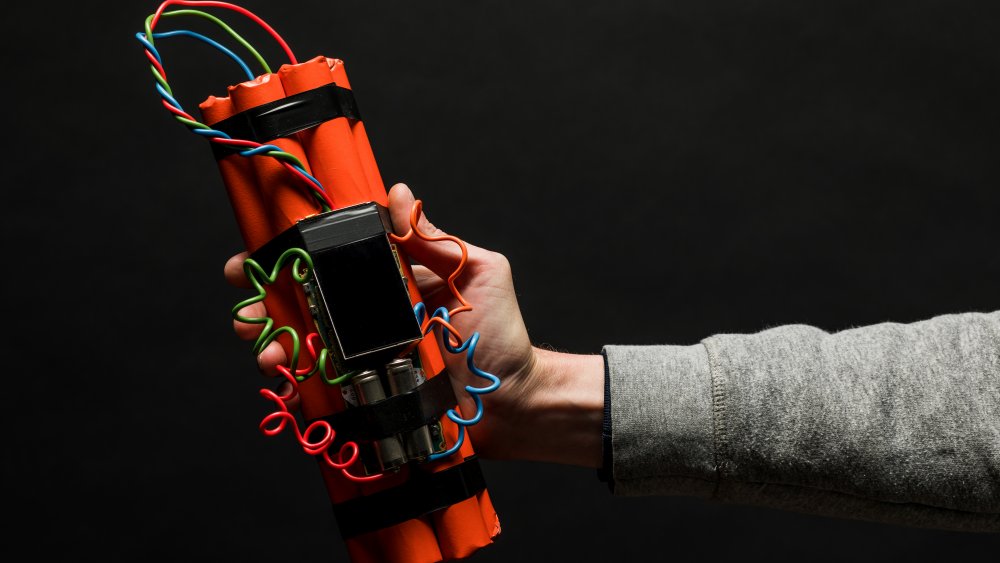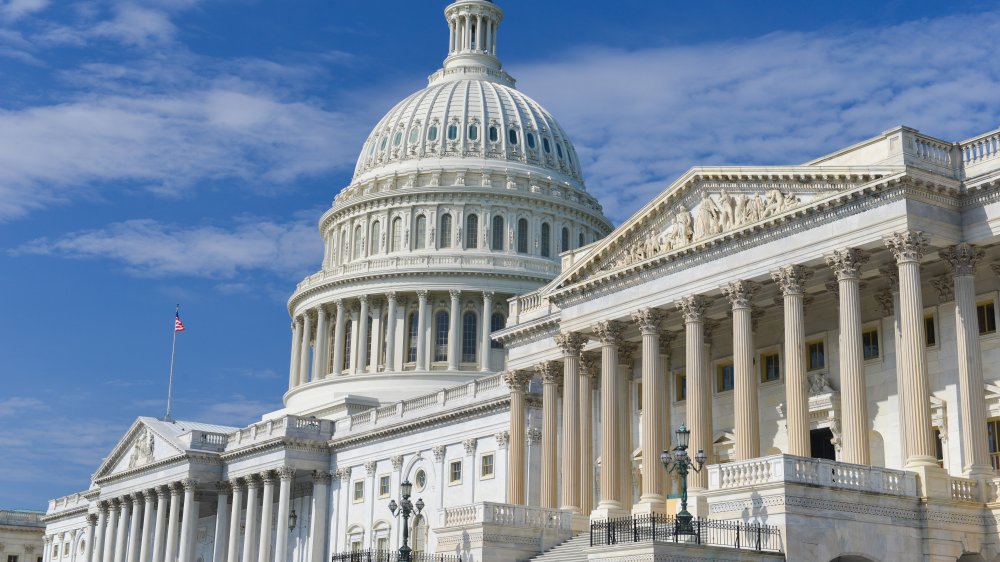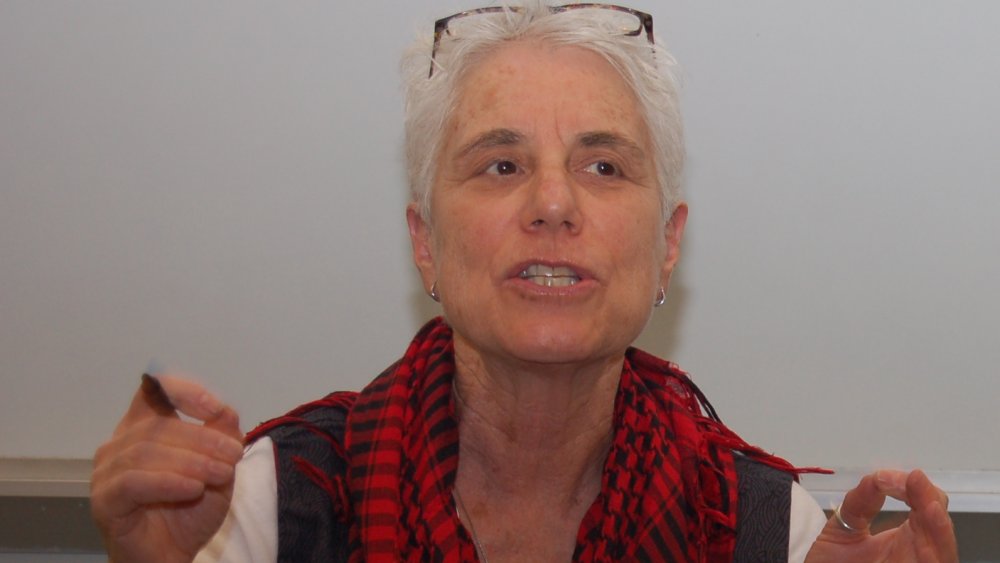The Crazy True Story Of America's First Female Terrorists
From 1978 to 1985, a left-wing revolutionary group known as the May 19th Communist Organization engaged in a series of robberies, prison breaks, and bombing attacks that landed their members front and center on the FBI's most wanted list. Although M19's inner circle was small, they engaged in strategic alliances with a number of other revolutionary organizations, creating a formidable coalition of resistance groups that took years to dismantle.
M19 saw themselves as guerrilla fighters, engaging in warfare with the ultimate goal of dismantling the oppressive systems of capitalism and imperialism in the U.S. They declared in their manifesto that that had "seen the collective strength of national liberation forever alter the balance of forces against imperialism. Revolution is the main trend in the world, and revolution is being led, ideologically and on the battlefield, by the national liberation struggles for proletarian power. We have changed our name to the May 19th Communist Organization out of a commitment to follow that leadership," via Global Security. Oh, and they were almost all women. This is the crazy true story of America's first female terrorists.
The founding of M19
The 1960s and 1970s were years of intense political turmoil in the United States. Well-educated, middle class young people became increasingly more disillusioned with the U.S. government. Growing frustration with the continuing quagmire of the Vietnam war, as well as other American involvement abroad, and tense race relations at home led to the rise of a series of left-wing revolutionary organizations. These groups, like the Students for a Democratic Society, the Weather Underground Organization, or the Black Liberation Army, were committed to fighting for left-wing ideals, even engaging in illegal guerrilla activities like robbery and bombings to achieve their goals, according to NY Daily News.
But by the end of the 1970s, many of these organizations had begun to fall apart, as their core members were either caught, arrested, or simply gave up the fight. However, a few die-hard believers remained committed to the cause. In 1978, former members of the Weather Underground, along with members of the Black Panthers and the Republic of New Afrika, came together to form the May 19th Communist Organization, per Global Security. Taking its name from the birthdays of Communist leader Ho Chi Minh, born May 19, 1890 and Malcolm X (May 19, 1925), M19 was determined to keep up the left-wing revolutionary movement. But one thing set M19 apart from other revolutionary groups: It was the first radical left-wing organization to be formed and run by women.
M19's Mission
The May 19th Communist Organization, according to Global Security, had three main objectives: "1. Free political prisoners in US prisons; 2. Appropriate capitalist wealth (Appropriations) to fund the third stage, and 3. Initiate a series of Strategic Attacks." Inspired by Marxism, M19 saw themselves as bringing an end to the oppressive systems of capitalism, imperialism, and sexism that had become prevalent in the West.
These women were not shy about engaging in violence to achieve these ends, declaring in their politico manifesto: "Armed struggle is the fundamental tool of oppressed people to win their liberation. We fully support, both politically and materially, the waging of national liberation war against imperialism," via Global Security. Their guerrilla techniques earned them the distinction, in the eyes of the FBI, of being America's first women-run terrorist organization.
Although M19 formed strategic alliances with other revolutionary groups, including the Revolutionary Armed Task Force, the Black Liberation Army, and the New Afrikan Freedom Fighters, the core members of M19 were just five women and two men, according to START.
M19 was a strict lesbian matriarchy
While M19's main goals remained consistent with those of preceding left-wing groups, there was one major difference. Sexism ran rampant in the old organizations. The men were in charge, and they took full advantage of it. Mark Rudd, a leader in the Weather Underground, claimed to have the "freedom to approach any woman in any collective. And I was rarely turned down, such was the aura and power of my leadership position," via NY Daily News.
The core members of M19, however, were adamantly opposed to patriarchal hierarchies. They rejected sexism and misogyny, and believed women's liberation, specifically "the struggle against lesbian oppression," went hand in hand with their goals of national liberation, per Global Security. Many M19 members were lesbians, and considered conventional romantic relationships, as well as traditional family life and child-bearing, to be tools of oppression.
While men were permitted to join M19, membership was restrictive, and males would have to prove their commitment to the cause of sexual liberation by respecting the matriarchal structure of the organization, accepting subordinate roles, and even remaining celibate, according to NY Daily News. One male member, Alan Berkman, even acted as a sperm donor for a founding M19 member as part of his initiation to the group, per the New York Post.
The founding members of M19
So who were these revolutionary lesbian matriarchs? The core of M19 was formed by five women, including: Judy Clark, Linda Sue Evans, Marilyn Buck, and Susan Rosenberg. All were well-educated products of the middle or upper-middle class, and most were radicalized while attending college in the late 1960s.
Judy Clark, however, was born into the Communist movement. Her parents, prominent members of the American Communist Party, moved the family to Moscow in 1950. The reality of living under Stalinism quickly soured their taste for Marxist ideologies, and Clark's parents left the party, per Politico. Clark, however, remained committed to Communist ideals. She became even more radical while briefly attending the University of Chicago. She joined the Students for a Democratic Society, an antiwar student activist organization, before being expelled for occupying a university administration building. Clark joined the Weather Underground in 1969.
Linda Sue Evans, another founding member, had a regular Midwestern upbringing. Hailing from Iowa, she didn't become engaged in political activism until attending college at Michigan State University, per Smithsonian Magazine. Energized by the Vietnam War and racial tensions at home, Evans also joined the Students for a Democratic Society. After travelling to Hanoi in 1969, she decried what she saw as American imperialist policies abroad and declared her commitment to Communism. She joined the Weather Underground movement the following year, engaging in ever more radical acts in the name of liberation.
Marilyn Buck and Susan Rosenberg engaged in political activism early
Marilyn Buck also cut her activism teeth at the Students for a Democratic Society. Born in Texas, Buck claimed her experience growing up in a segregated state opened her eyes to racial injustice, per Friends of Marilyn Buck. She briefly attended Berkeley, before transferring to University of Texas at Austin, where she joined the SDS and protested against the Vietnam War. However, Buck didn't stay in Texas long either. She moved again, this time to San Francisco, where she became heavily involved with California's growing left-wing extremist culture. She felt increasing solidarity with the Black Liberation movement, and by the early 1970s, Buck was "the chief gunrunner and the only white member of the BLA," per the International Centre for the Study of Radicalisation. In 1973, Buck was arrested for running firearms for the Black Liberation Army and sentenced to 10 years in federal prison. She served only four of those years at Alderson, West Virginia, before she escaped and went underground after being granted a furlough to New York City in 1977, per Friends of Marilyn Buck.
Susan Rosenberg also became aware of injustice at a young age. According to Politico, her parents were active in the antiwar and civil rights movements in New York City. By age 14, she had joined the youth arm of the SDS, called the High School Student Union. By the time she attended Barnard College in 1972, she was wholly committed to ending American imperialism abroad.
Susan Rosenburg teamed up with the RNA
In 1976, Susan Rosenberg left Barnard College to work as a drug counselor at Lincoln Hospital in the Bronx. It was in the hospital's drug detox center that she met Mutulu "Doc" Shakur, who headed the "acupuncture collective," according to Tonight We Bombed the U.S. Capitol. Shakur held a degree from the Institut d'acupuncture du Québec, and was a strong proponent of the belief that acupuncture and traditional Chinese medical techniques were the true keys to treating drug addiction. Shakur believed that methadone and other common treatment methods were merely ways to keep black and brown communities poor and dependent on chemicals. Under his mentorship, Rosenberg studied acupuncture techniques, eventually receiving her degree from the Institut d'acupuncture du Québec, as well.
Shakur was also a leading member of the Republic of New Afrika. Their political ideologies aligned, and Shakur soon realized Rosenberg and her group could be an asset to the RNA. The Republic of New Afrika planned to rely on illegal activity — primarily robbing banks or armored cars — to fund their activities. Per Politico, M19 members, who were predominantly unassuming white females, were the perfect covers to assist with tasks like driving getaway cars, renting safe houses, or performing other monetary transactions, without attracting unwanted attention. By 1979, M19 and the RNA had agreed to partner up.
Breaking out Willie Morales
In 1978, M19 forged another alliance, this time with the Fuerzas Armadas de Liberación, or FALN, which fought for Puerto Rican independence from the U.S. FALN's expert bomb maker, a man named Willie Morales, had suffered an accident while working with explosives. On July 12, 1978, according to the Spectator, Morales had been finishing work on a pipe bomb at his home in Queens when it accidentally detonated, taking off nine fingers and disfiguring half of his face. When they arrived, police and firefighters found additional explosives and evidence linking Morales to a previous FALN bombing in his apartment, per the Guardian. He was taken into custody and convicted on weapons charges.
Morales was later taken to Bellevue Hospital to treat the injuries sustained during the accidental detonation. While he was being held in the third-floor prison ward at Bellevue, FALN and M19 hatched a plan to break him out. On the evening of May 21, 1979, Morales' lawyer smuggled a pair of bolt cutters into his room.
Morales secretly manipulated the bolt cutters to snip through the mesh wiring of his window and, using a rope he constructed with ACE bandages, shimmied down the side of the building to the M19 members waiting below, per Politico. They were able to move him to a safe house in New Jersey undetected. Morales escaped to Cuba, where he was granted political asylum by Fidel Castro. Morales, who remains on the FBI's most wanted list, is still living in Cuba to this day.
Assata Shakur's prison break
Just a few months after Willie Morales' successful escape, M19 planned another prison break. Assata Shakur, otherwise known as Joanne Chesimard, an organizer who had been described as "the soul of the Black Liberation Army," had been arrested for the execution-style killing of a state trooper in May 1973, via the New York Times. Shakur was sentenced to life imprisonment plus 65 years for the trooper's murder, and was being held at the Clinton Correctional Facility for Women in New Jersey.
In 1979, M19 and members of the Black Liberation Army devised a plan to break Shakur out of the maximum-security prison. On November 2nd, three BLA members signed into the facility as guests. Once inside, they pulled pistols on the guards, taking two of them hostage and commandeering a prison van for the escape. Two M19 members were parked and waiting in a lot adjacent to the prison, and all three BLA members and Shakur made a clean getaway.
Once outside the prison, M19 women drove Shakur to a safe house in Pittsburgh, where she remained concealed for almost a year. From there, they aided her escape to the Bahamas. She eventually made her way to Havana, and by 1984, Shakur had also been granted political asylum in Cuba, per Politico.
The Brink's Robbery turned deadly
M19 and members of RNA and Black Liberation Army continued their partnerships into the 1980s. The group had remained relatively under the radar with their patchwork alliances of members and multiple pseudonyms, but a botched robbery attempt in October of 1981 changed everything.
On the morning of October 20th, four M19 members and six members of the BLA robbed a Brink's armored car outside the Nanuet Mall, in Nanuet, New York. They open fired on the guards as they were loading the truck, killing one and wounding two others, before making off with $1.6 million in cash, per Lohud. The group ditched their original getaway vehicle in the parking lot of a Korvette's store and split up. One group drove off in another rented van, and the other in a yellow Honda, per the New York Times. By this time, police had descended on Rockland county, and roadblocks had been implemented to prevent their escape. The getaway van was pulled over at a roadblock off Route 59. As the police officers approached, three men emerged from the vehicle and opened fire, killing two Nyack police officers before the suspects were finally taken into custody. Judith Clark, the other getaway driver, was apprehended when she crashed the Honda after accidentally shooting herself in the leg, per Politico.
The deadly robbery attracted sensationalist press, bringing national attention to M19 and alerting the FBI to their existence. They launched a nationwide manhunt for any other members with connections to the robbery.
M19 committed multiple bombing attacks
The heat from the Brink's robbery forced the other M19 members underground, alternating between addresses, jobs, disguises, and aliases to keep their identities hidden. But they remained committed to the revolution and convinced that violence was the only way to achieve their objectives. Their manifesto specifically called for armed struggle, and they intended to adhere to it.
M19's first bombing took place on January 28, 1983. They bombed an FBI office in Staten Island with explosives they had stolen from a building site in Austin, Texas, three years earlier, according to the Spectator. For the next two years, M19 kept up a series of bombings throughout Washington D.C. and New York. Their targets included the National War College in Washington, D.C and the Washington Navy Yard Computer Center, according to Politico. To avoid detection, they never identified themselves as M19, but took credit for the bombings under a collection of assumed names, including the Armed Resistance Unit, the Red Guerrilla Resistance, and the Revolutionary Fighting Group, per START.
In 1984, M19 was responsible for the bombings of the Israeli Aircraft Industries Building and the South African consulate. Their final bombing took place at the Policemen's Benevolent Association in New York City on February 23rd, 1985. Although their explosives never killed anyone, M19 sowed chaos and caused millions of dollars worth of property damage.
Bombing the U.S. Capitol
M19's most infamous bombing attack took place on November 7th, 1983. Shortly before 11 p.m., an unidentified individual called the U.S. Capitol switchboard and delivered a warning: A bomb had been placed on the second floor of the north wing and was set to go off. At 10:58 pm, the bomb detonated as promised, per the Senate's official website. Fortunately, the Senate had adjourned at 7:02 p.m., due to a deliberation session that had ended earlier than usual, so few people still remained in the building. No one was injured, but the blast caused an estimated $250,000 in damage to walls, partitions, furniture, and paintings, per Politico. Following the attack, the Senate implemented tighter security measures, including required staff ID cards and permanently closing the area outside the Senate chamber to the public.
M19 took credit for the bombing under the pseudonym of the "Armed Resistance Unit," citing the United States' involvement in Lebanon and Grenada as the reason for the attack. In a missive they mailed to a local Washington Radio Station and National Public Radio after the bombing, they declared: "We purposely aimed our attack at the institutions of imperialist rule rather than at individual members of the ruling class and government. We did not choose to kill any of them at this time. But their lives are not sacred and their hands are stained with the blood of millions," via Politico.
Major arrests brought an end to M19
M19 planned to ramp up their attacks, aiming to go "from target shooters to combat shooters," via the Spectator. However, authorities halted their plans in the fall of 1984. A tip-off from a night manager at a storage unit in Cherry Hill, New Jersey alerted authorities to a locker Rosenberg had rented. Rosenberg and Timothy Blunk were arrested after New Jersey police raided the locker and uncovered guns and over 700 pounds of explosives, per NY Daily News.
Laura Whitehorn had been on the FBI's radar since the days of her involvement in the Weather Underground. Suspecting she was also an M19 member, the FBI had been keeping tabs on her and her known associates, including Alan Berkman. The FBI suspected Berkman of involvement in the Brink's robbery. They arrived at Whitehorn's Baltimore apartment on May 11, 1985 with a warrant for Berkman's arrest. They entered after hearing someone shredding paper, per the Washington Post, and the search of Whitehorn's apartment revealed scores of damning evidence. Authorities found stashes of weapons, stolen IDs, explosive devices, intelligence files, and even wigs and makeup for disguises.
Buck escaped the Baltimore raid, but was picked up with Linda Sue Evans just outside New York. Berkman and another member, Betty Ann Duke, were arrested shortly after, carrying pistols outside Philadelphia. By the end of May 1985, all but one of M19's key members were arrested and indicted on charges ranging from murder to conspiracy, effectively bringing an end to M19's campaign of violence.
